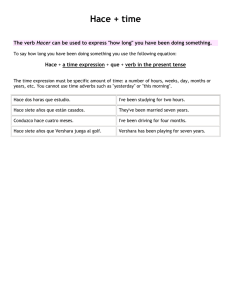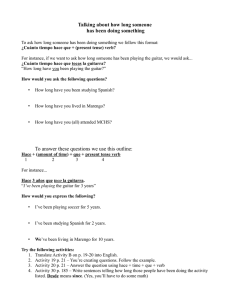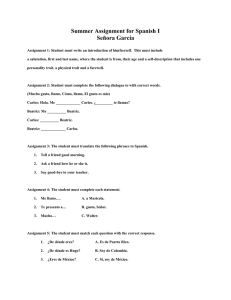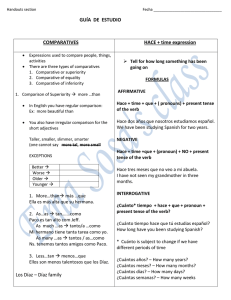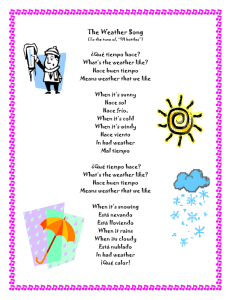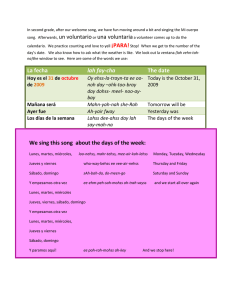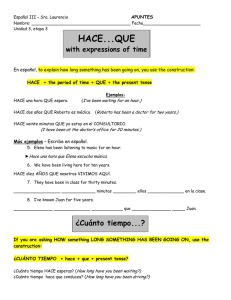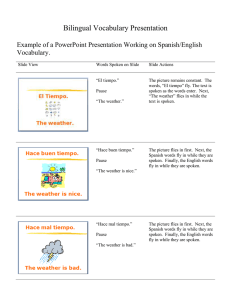Document
Anuncio
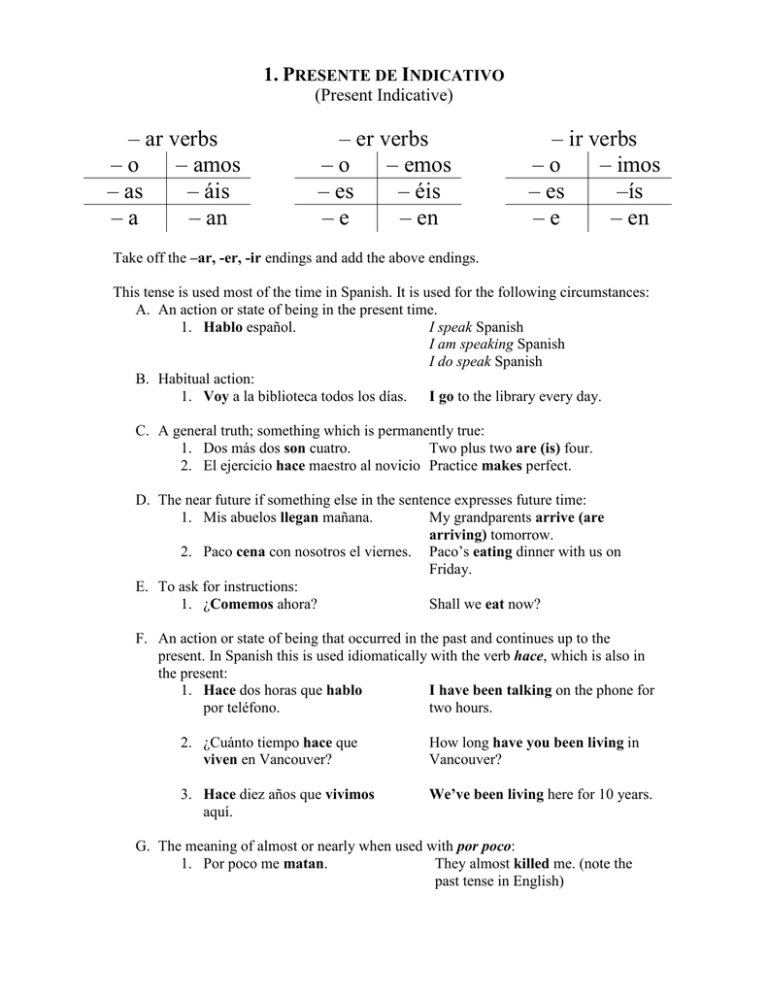
1. PRESENTE DE INDICATIVO (Present Indicative) – ar verbs –o – amos – as – áis –a – an – er verbs –o – emos – es – éis –e – en – ir verbs –o – imos – es –ís –e – en Take off the –ar, -er, -ir endings and add the above endings. This tense is used most of the time in Spanish. It is used for the following circumstances: A. An action or state of being in the present time. 1. Hablo español. I speak Spanish I am speaking Spanish I do speak Spanish B. Habitual action: 1. Voy a la biblioteca todos los días. I go to the library every day. C. A general truth; something which is permanently true: 1. Dos más dos son cuatro. Two plus two are (is) four. 2. El ejercicio hace maestro al novicio Practice makes perfect. D. The near future if something else in the sentence expresses future time: 1. Mis abuelos llegan mañana. My grandparents arrive (are arriving) tomorrow. 2. Paco cena con nosotros el viernes. Paco’s eating dinner with us on Friday. E. To ask for instructions: 1. ¿Comemos ahora? Shall we eat now? F. An action or state of being that occurred in the past and continues up to the present. In Spanish this is used idiomatically with the verb hace, which is also in the present: 1. Hace dos horas que hablo I have been talking on the phone for por teléfono. two hours. 2. ¿Cuánto tiempo hace que viven en Vancouver? How long have you been living in Vancouver? 3. Hace diez años que vivimos aquí. We’ve been living here for 10 years. G. The meaning of almost or nearly when used with por poco: 1. Por poco me matan. They almost killed me. (note the past tense in English)
